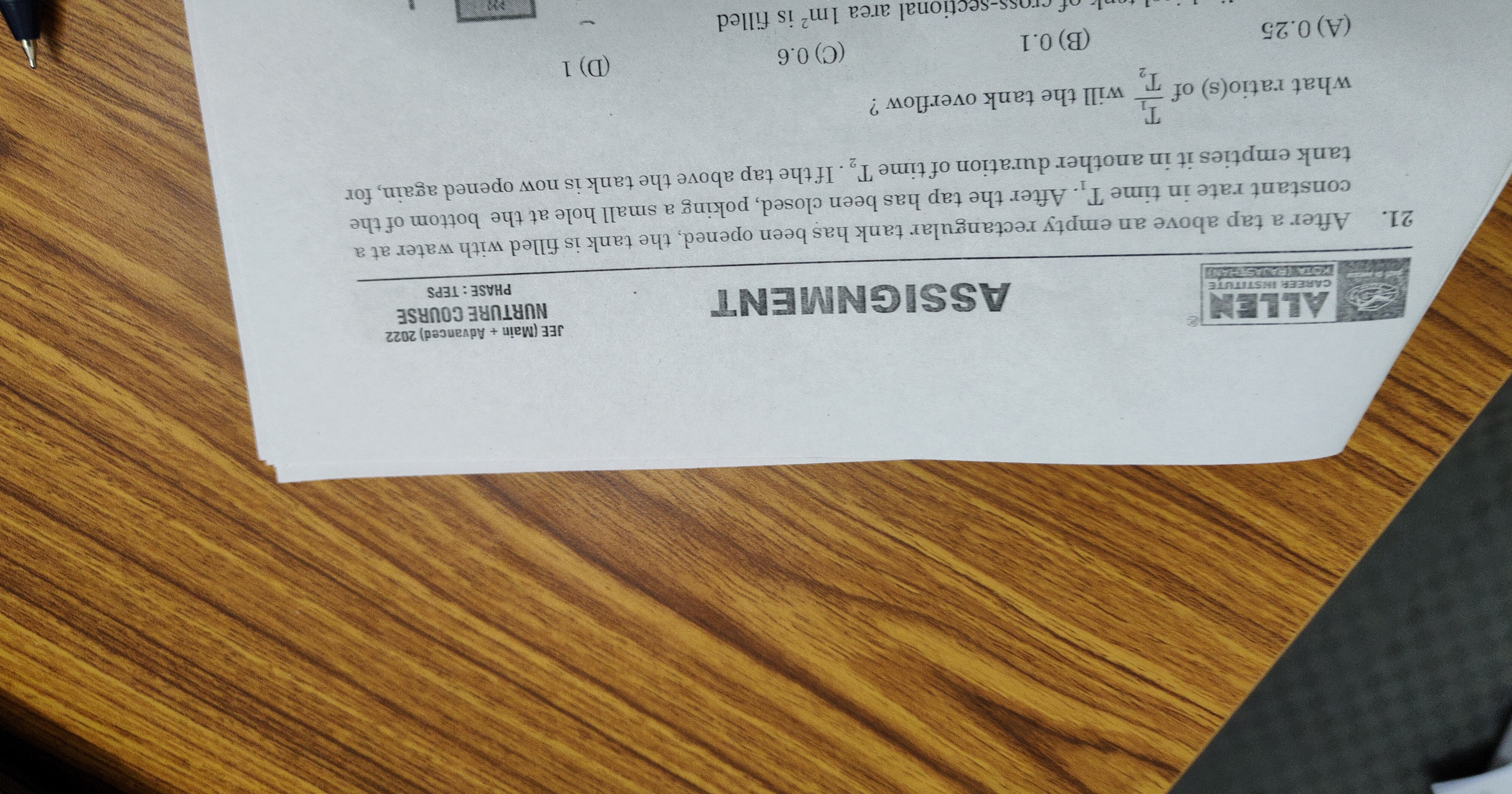Question
Question: After a tap above an empty rectangular tank has been opened, the tank is filled with water at a cons...
After a tap above an empty rectangular tank has been opened, the tank is filled with water at a constant rate in time T1. After the tap has been closed, poking a small hole at the bottom of the tank empties it in another duration of time T2. If the tap above the tank is now opened again, for what ratio(s) of T2T1 will the tank overflow?

0.25
0.1
0.6
1
(A), (B)
Solution
Let V be the volume of the tank. The inflow rate is constant: Rin=T1V. By Torricelli's law, the outflow rate is proportional to h, where h is the water height. The time to empty, T2, is related to the average outflow rate. The maximum outflow rate, when the tank is full, is Rout,max=T22V. Overflow occurs if the inflow rate is greater than the maximum outflow rate: Rin>Rout,max. Substituting the expressions: T1V>T22V. This simplifies to T11>T22, or T2T1<21=0.5. Therefore, the tank overflows if T2T1 is less than 0.5. Options (A) 0.25 and (B) 0.1 satisfy this condition.
